Six Lodes of Anthropocene

.
I was in the back of a car when I searched the internet and tried to write this down in my notebook. The resulut is readablede, I thonk.
This is what it says: “A lode is a deposit of metalliferous ore that fills or is embedded in a fracture or crack in a rock formation or a vein of ore”
A few days ago I found six lodes of fine metalliferous material that has come loose from garbage collections in front of Freedom Plaza in the Upper West Side of Manhattan, during the short-lived reign of Mayor Adams after he bent his knee, and has fallen into cracks in the sidewalk.
Fifty-three million years from now these lodes will be compressed into thin linear strata of heterogeneous composites that betray their origin in a highly civilized society by the appearance of artifacts that reflect mastery in metallurgy, glass making and other fancy things.
In the first lode we find a hook or counter-hook such as might have been used to fasten and hang a shower curtain on a horizontal rail with the profile indicated in this fortuitous sideview. But we could be wrong.
The second lode attracts the eye to two fragments of deeply purple glass of clearly man-made origin. The placement of two additional fragments of clear glass at the top suggests the before and after of an undefined, highly sophisticated process of color infusion.
The third lode brings together a threesome of differently colored glass jewels, including one of the color we have already seen and appreciated in lode #2, with a threaded hex-nut screw, all on a background of stones of many shapes, compositions and contemporaneous origins.
The fourth lode contains two oblong pieces of glass, one of which is matted, which can both be contextualized by reference to the contents of lode #5 — as hanging or dangling decorations of a lamp to lend it extra luster — which have lost their metal encasings, presumably on top, as seen by comparison with their companion piece in #5.
The contents of the fifth lode, already given away partially in the description of the fourth, is a surprisingly well-preserved oblong luster appendant with flower petal-like brass encasing.
We now turn to the final, sixth piece of this splendid collection. It is an arrangement of two metallic pieces that challenge each other with the theme of roundness. Both could be regarded as microscopes with 1:1 magnification, and the upper one appears to be focused on a piece of quartz or some such material of great age.

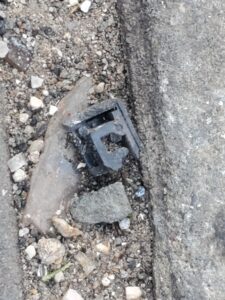
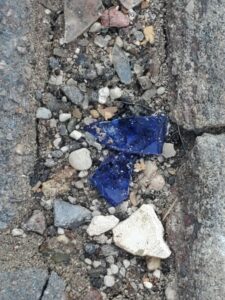
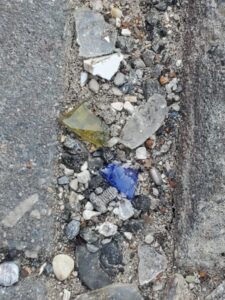
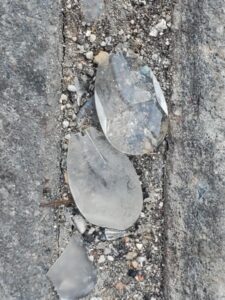
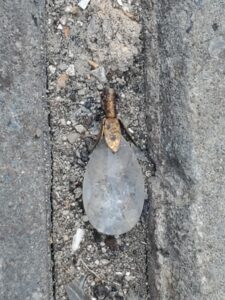
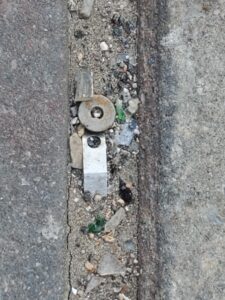

Leave a Reply